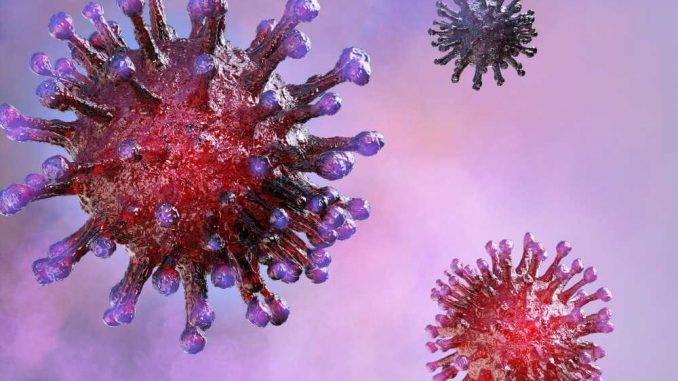
In a recent study published in Immunity, researchers demonstrated how sarbecovirus family down-regulates major histocompatibility complex-I (MHC-I) surface expression to evade cellular immunity.

Background
All pathogenic viruses typically employ different strategies to escape cellular immunity or counteract immune responses. For instance, severe acute respiratory syndrome coronavirus-2 (SARS-CoV-2), a member of the sarbecovirus subgenus, down-regulates surface expression of major histocompatibility complex-I (MHC-I), that presents viral peptides to the cluster of differentiation 8 (CD8)+ cytotoxic T cells.
In fact, all viruses associated with chronic infections employ different mechanisms to deplete MHC-I from infected cell surfaces. For example, human immunodeficiency 1 (HIV-1) triggers Nef-induced endocytosis of MHC-I from the cell surface. Several affinity-based approaches have shown that SARS-CoV-2 accessory proteins, including open reading frame (ORF) proteins, are rich in endoplasm reticulum (ER) or Golgi organelles. These are the sites where viral peptides are loaded onto the MHC-I molecule and transported to the cell surface for presentation to CD8+ T cells.
About the study
In the present study, researchers used HIV-1 a based lentiviral vector to express all SARS-CoV-2 ORFs as annotated in a study by Wu et al. and Gordon et al. They transduced human 293T cells with these SARS-CoV-2 proteins after two days. Then, the team measured MHC-I surface levels by flow cytometry (FC) using a pan-human leukocyte antigen (HLA) class I-reactive monoclonal antibody.
In addition, the researchers examined the impact of SARS-CoV-2 ORFs on the expression of tetherin, a cell surface antiviral protein that traps enveloped virions budding through cell membranes. They also confirmed that MHC-I down-regulation occurred using a different antibody, specific for the HLA-A HC.
The researchers also constructed six chimeric SARS-CoV-2/SARS-CoV ORF7a expression vectors to map the determinants of the differential ability to modulate cell surface MHC-I levels.
Study findings
Expression of ORF7a reduced MHC-I levels on the cell surface by approximately fivefold, whereas expression of other individual viral proteins (e.g., ORF8) did not affect MHC-I surface levels. None of the SARS-CoV-2 viral ORFs reduced the levels of tetherin stably expressed on the surface of 293T cells, underscoring the specificity of the effect of ORF7a on MHC-I.
Genetics & Genomics eBook

Compilation of the top interviews, articles, and news in the last year.
Download a copy today
ORF7a caused reduced MHC-I cell surface levels in other human cells, indicating that its activity is not cell-type-specific. SARS-CoV-2 ancestral strain infection in A549 cells, specifically in the infected nucleocapsid-positive subpopulation, MHC-I surface levels had depleted. However, MHC-I down-regulation also occurred in cells infected with SARS-CoV-2 but lacking ORF7a. It indicated the existence of additional, redundant means of MHC-I down-regulation.
Previous studies had reported MHC-I down-regulation by ORF8. However, the researchers did not observe the same in the current study settings. It further reinstated that additional mechanisms of MHC-I down-regulation require the concerted action of multiple SARS-CoV-2 proteins.
Western blot analysis revealed the mechanism by which ORF7a down-regulated MHC-I expression. When the researchers transduced cells expressing ORF7a with the ORF7a lentivirus at a sufficient multiplicity of infection (MOI), their total endogenous cellular MHC-I increased. It also showed slightly accelerated migration, thus indicating that ORF7a triggered the intracellular accumulation of MHC-I and altered its post-translational modification. Similarly, immunofluorescent staining of endogenous MHC-I in A549 cells showed that ORF7a markedly changed the subcellular distribution of MHC-I molecules. Similar to FC observations, it reduced MHC-I HC fluorescence at the cell surface while intracellular MHC-I HC accumulated. Furthermore, the researchers observed that the intracellular MHC-I HC partially colocalized with a marker of ER, for instance, MHC-I component β2M. It indicated ORF7a blocked MHC-I movement via the secretory pathway to the cell surface.
The single amino acid at position 59, variable among sarbecovirus ORF7a proteins, governed the difference in MHC-I downregulating activity, while the presence of a polar residue correlated with inactivity. Intriguingly, the researchers also found that SARS-CoV-2 ORF7a was physically associated with the MHC-I heavy chain to inhibit antigen presentation to CD8+ T cells.
Conclusions
So far, studies have associated MHC-I down-regulation with viruses having deoxyribonucleic acid (DNA) genomes and causing chronic infections. However, SARS-CoV-2, an ribonucleic acid (RNA) virus that causes acute infection, could gain a competitive advantage through MHC-I down-regulation to mitigate the inhibitory action of immune responses.
In COVID-19 reinfection cases, MHC-I down-regulation limits the protective effects of pre-existing T cell responses to SARS-CoV-2 epitopes. Considering SARS-CoV-2 infection can persist for months in anatomical sites, such as the gut, or in individuals with suboptimal immune responses, it might be evolving MHC-I down-regulation properties too.
Intriguingly, the study also pointed out that the ORF7a MHC-I interaction might be a site of genetic conflict in natural hosts. However, it yet remains unclear the extent to which ORF7a exhibits this activity in other natural hosts, such as bats. Thus, loss versus retention of MHC-I downregulation activity in non-natural hosts might be sporadic. The differential functionality of ORF7a proteins might affect sarbecovirus dissemination and persistence in human populations, particularly those with prior sarbecovirus infection or vaccination.
Fengwen Zhang, Trinity M. Zang, Eva M. Stevenson, Xiao Lei, Dennis C. Copertino, Talia M. Mota, Julie Boucau, Wilfredo F. Garcia-Beltran, R. Brad Jones, and Paul D. Bieniasz. (2022). Inhibition of major histocompatibility complex-I antigen presentation by sarbecovirus ORF7a proteins. PNAS. doi: https://doi.org/10.1073/pnas.220904211 https://www.pnas.org/doi/10.1073/pnas.2209042119
Posted in: Medical Science News | Medical Research News | Disease/Infection News
Tags: Amino Acid, Antibody, Antigen, Cell, Chronic, Coronavirus, Coronavirus Disease COVID-19, covid-19, Cytometry, DNA, Flow Cytometry, Fluorescence, Genetic, HIV, HIV-1, Human Leukocyte Antigen, immunity, Immunodeficiency, Intracellular, Lentivirus, Leukocyte, Molecule, Monoclonal Antibody, Peptides, Protein, Respiratory, Ribonucleic Acid, RNA, SARS, SARS-CoV-2, Severe Acute Respiratory, Severe Acute Respiratory Syndrome, Syndrome, Virus, Western Blot

Written by
Neha Mathur
Neha is a digital marketing professional based in Gurugram, India. She has a Master’s degree from the University of Rajasthan with a specialization in Biotechnology in 2008. She has experience in pre-clinical research as part of her research project in The Department of Toxicology at the prestigious Central Drug Research Institute (CDRI), Lucknow, India. She also holds a certification in C++ programming.
Source: Read Full Article